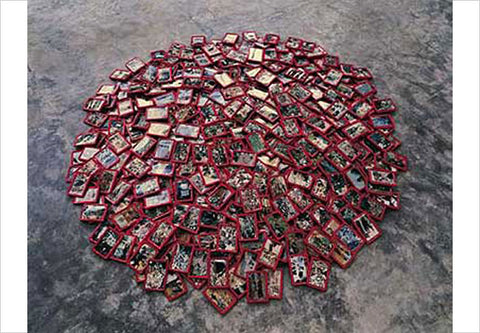
Vivan Sundaram
INDIAN CONTEMPORARY ARTIST
.
- Born in 1943 in Shimla, Himachal Pradesh, India
- Lives and works in New Delhi, India
.


UNDERSTANDING THE ARTIST
.
Sundaram's recent ensemble rehearses the discursive construction of the city-as-waste, by representing an urban whole, through elaborate and exaggeratingly ordered arrangements of garbage. Working collaboratively with waste-pickers associated with the non-governmental organization Chintan, which is an environmental and research action group based in New Delhi. The artist sorts, re-assembles, re-arranges and scales the found-objects of trash into detailed models of a monumental urban landscape. Through a close reading of its formal aspects, the entry examines trash's reflection on logics of planned obsolescence which governs both the work as well as fantasies of economic nationalism premised on dualistic images of the notions of a mega-city.
Amrita Shergill is a strong element in his works - The artist brought to the table a series of manipulated photographs of his late aunt, Amrita Sher-Gil clicked by Umrao Singh (Sher-Gil's father and Sundaram's grandfather), the artist complicated issues of preexisting artistic agency and familial relationships and history.
Vivan Sundaram's art comes from his deep interest in the political and a strong attachment to the personal. He developed a style of political commentary on contemporary politics with radical frontline views, mostly stemming from his politically active years as a student in MS University, Baroda and later at the Slade School, London.
Sundaram infuses the traditional with the contemporary to create a strong dialogue while engaging traditional materials like charcoal on paper alongside industrial products like engine oil and steel, fashioning three-dimensional eulogies to a fast-deteriorating ecology. His artworks show the violent aftermath that has gripped several cities while also somehow metaphorically using the structure to consider issues of sleep, desire, and sexuality.
.
SELECTED IMAGES
.

Vivan Sundaram, Untitled, 1990, charcoal on paper, 29.5 x 39.5 in


















